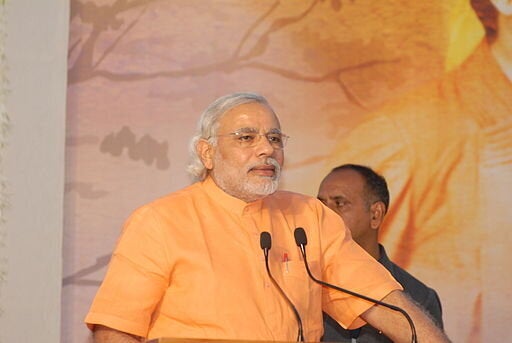
*Joseph McQuade [2013] is doing a PhD in History with the support of a Gates Cambridge Scholarship. Picture of Narendra Modi. Credit: Mayur Bhatt and Wiki Commons.
Amid the cheering of nearly 20,000 supporters and the vocal protests of academics and human rights advocates, Indian Prime Minister Narendra Modi's theatrical appearance in New York on September 28th embodied many of the contradictions of his highly polarising popular mandate. Still, despite the attention understandably being drawn to Modi's first visit to America (having previously been denied a visa due to accusations of complicity in the Gujarat killings of 2002), his visit to Japan one month previous may prove in the long term to be more significant.
Much has been said about the economic and geopolitical potential of a stronger relationship between India and Japan, widely acknowledged as two of the key powerhouses of the 21st century. On issues of defence, demography and technology both countries complement each other well, with India offering a youthful labour pool and massive market in contrast to Japan's ageing population and potential for technological investment.
In assessing this relationship, however, some have gone beyond economic analysis, arguing that 'historic links' or 'civilisational' harmony can provide the glue for a relationship that transcends political pragmatism, with Modi himself saying that his visit to Kyoto "reflects the ancient foundations of our contemporary relations." As Asia regains its historic role as the economic and geopolitical centre of gravity in a world-system that has become global, it is worth thinking about how these civilisational arguments can be interpreted within a broader context of modern Asian history and political thought.
Interwar Pan-Asianism and why it matters
Following widespread disillusionment with Eurocentric visions of modernity in the wake of the horrors of the First World War, similar arguments regarding the shared heritage of India and Japan were used by thinkers such as Rash Behari Bose in order to present a powerful counter-narrative to the oppressive status quo of Western imperialism. Not to be confused with the more famous Subhas Chandra Bose, Rash Behari Bose was a Bengali revolutionary who gained widespread notoriety when he threw a bomb at Lord Hardinge, the Viceroy and Governor General of India, during a triumphal procession at Delhi in 1912.
Fleeing British authorities in India, Bose lived out the rest of his life in Japan, where he became an important and influential advocate of Asian unity. At Nagasaki in 1926, Bose attended an international conference with representatives from all over Asia, whose stated goal was "to bring about permanent world peace based on justice and equality and secure the freedom and happiness of all races without regard to class, racial, or religious differences." This ideology, called Pan-Asianism, argued that a new diplomacy centred in a 'New Asia' was the solution to an international system suffering from the twin scourges of capitalist imperialism and socialist materialism.
Despite the enormous potential of the ideology in charting an alternative course for international politics, Pan-Asianism came to be appropriated as a political strategy by Japanese nationalists seeking to enhance the legitimacy of their own imperial agenda in the build-up to the Second World War. Aligning Pan-Asianism with right-wing militarism resulted in a loss of credibility for the ideology, particularly among Korean and Chinese intellectuals suffering under Japanese imperial ambitions, and the New Asia envisioned by Bose vanished into obscurity in the postwar period.
Understanding the global political thought of interwar radicals like Rash Behari Bose can provide a useful framework for charting potential courses for bilateral relations between countries like India and Japan in the 21st century. With the motivations of both Narendra Modi and Japanese Prime Minister Shinzo Abe being questioned by critics wary of right-wing nationalist agendas, the story of interwar Pan-Asianism should be a source of both optimism and caution. If this is the dawn of Bose's New Asia, the willingness of leaders to learn from the past may play a key role in shaping the course of the future.
